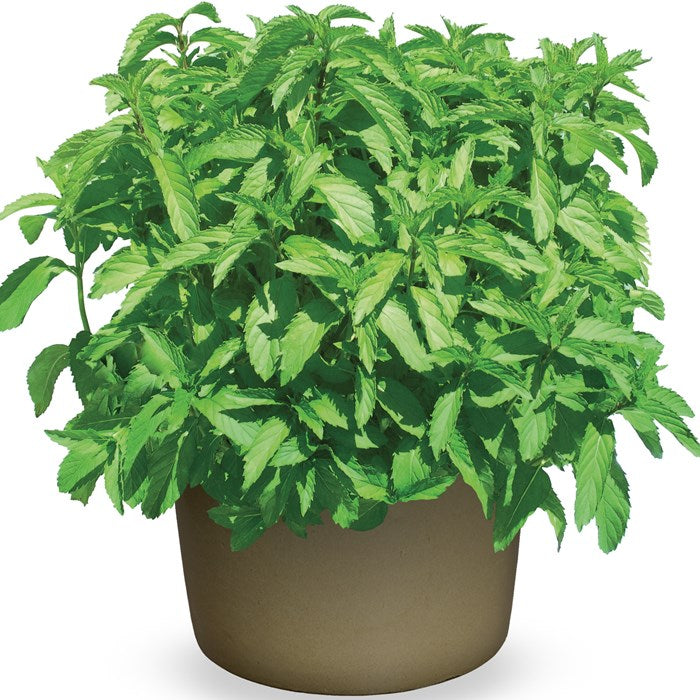نعناع السويسري
نعناع السويسري
Couldn't load pickup availability
Mentha piperita swiss
Growing Mentha piperita ‘Swiss,’ commonly known as Swiss mint or chocolate mint, involves similar steps to growing other varieties of mint. Here’s a concise guide:
1. Climate: Swiss mint, like other mints, is hardy and adaptable. It grows well in USDA Hardiness Zones 3-11.
2. Sunlight: Plant Swiss mint in a location that receives partial to full sunlight. While it can tolerate partial shade, it generally prefers sunnier conditions.
3. Soil: Provide well-draining, fertile soil. Mint is not overly picky about soil conditions but benefits from soil rich in organic matter. Aim for a slightly acidic to neutral pH.
4. Planting: Plant Swiss mint in the spring or early fall. You can grow it from seeds, but it’s more common to propagate from cuttings or by dividing established plants. Space the plants about 18-24 inches apart.
5. Watering: Keep the soil consistently moist, especially during dry periods. Mint prefers consistently moist conditions. Water when the top inch of soil feels dry.
6. Fertilization: Mint is not a heavy feeder. A balanced, all-purpose fertilizer applied in the spring is generally sufficient. Be cautious with nitrogen-rich fertilizers to prevent overly lush growth.
7. Mulching: Apply a layer of mulch around the plants to help retain soil moisture, suppress weeds, and regulate soil temperature.
8. Pruning: Regular pruning helps control the spread of mint. Pinch back the tips regularly to encourage bushier growth and harvest leaves for culinary use. Pruning also helps prevent the plant from flowering excessively.
9. Harvesting: Harvest Swiss mint leaves when the plant is well-established, usually after a few months. Pick the leaves regularly for the best flavor. You can harvest entire stems or individual leaves.
10. Pest and Disease Control: Mint is generally resistant to pests and diseases. However, keep an eye out for issues like aphids or spider mites. Treat with insecticidal soap or neem oil if needed.
11. Companion Planting: Mint, including Swiss mint, is a good companion plant. It can help deter certain pests and enhance the flavor of neighboring plants.
12. Propagation: Swiss mint is easily propagated by taking cuttings or by dividing established plants. This is often done in the spring.
13. Container Growing: Growing Swiss mint in containers is a good option to control its spread. Choose a large container with drainage holes and use well-draining potting mix.
14. Winter Care: Mint is generally hardy, and Swiss mint can survive winter in many climates. In colder regions, mulch around the base to protect the roots.
Swiss mint is known for its delightful chocolate-mint fragrance and flavor, making it a popular choice for teas, desserts, and culinary uses. Enjoy growing this aromatic herb in your garden or containers.
Share

